[ad_1]
Update: Google has released its fifth and final developer preview of Android Wear 2.0 and it comes with a few notable updates.
Building atop of the hearty fourth update, which introduced a dedicated Play Store and simple authentication when logging into Android Wear apps, the latest test image bests it with iOS support.
Now, iPhone users can test out a watch and best of all, the native app ability has been confirmed to work in iOS land.
In Android Wear 1.5, iOS-compatible watches offer an experience that pales in comparison to what Android users get. Looks like that is ending once and for all in Android Wear 2.0.
Android Wear 2.0 is nearing its launch in early February, with rumors pointing to February 9 as the exact date you can expect to install the new goodness.
Original article follows below.
Android Wear is Google’s smartwatch operating system and the main competitor to the watchOS-running Apple Watch.
It’s been around since 2014 and soon it’s going to get a big update to Android Wear 2.0, bringing a number of improvements.
Below you’ll find information on how it works, all the current features, the key apps and Android Wear watches, as well as details on what Android Wear 2.0 will bring and when you’ll be able to get it.
Cut to the chase
- What is it? Google’s wearable platform
- When is it out? The official release is rumored to be February 9
- What will it cost? Absolutely nothing, so long as you have a compatible watch
Android Wear interface and features
Android Wear might share a name with standard Android but the layout of the interface is quite different, as it’s built for much smaller devices and designed with hands-free use in mind.
It’s also far more unified than Android on your smartphone or tablet, as some manufacturers have been putting their own skins and launchers over top for years. But, Android Wear doesn’t grant that level of freedom, so all smartwatches running the operating system have the same software look and layout.
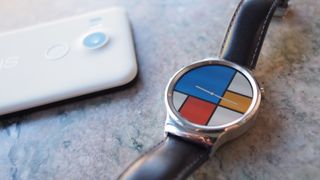
Android Wear makes accessing some of your phone’s handiest features as simple as looking down at your wrist. It primarily acts as a companion to amplify your phone’s notifications so that you don’t need to dig around in your pocket just to see that someone liked one of your tweets.
The watch face is home base on Android Wear. Swiping up and down through the card-based menu system reveals the weather, your calendar and other pertinent app notifications that have been ported over to the watch.
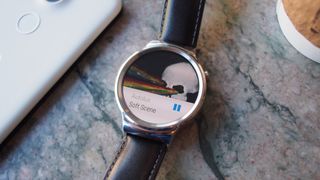
Sliding your finger to the right dismisses the notifications, but swiping left will reveal different options for each app you use, digging deeper into five day forecasts and the ability to reply to a text with your voice, to name a few examples.
Most of what Android Wear pushes to view is just a copy of the notifications you’re used to seeing on your phone. But it also delivers some thoughtful, personalized notifications. Traveling to a new city? It will automatically set you up with the weather there, as well as back home.
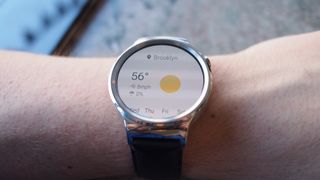
Just as slick, Android Wear figures out which sports team you like based on your Google searches and provides real-time sports scores.
It does the same for directions to addresses you’ve recently looked up or appointments in your calendar. “It’s 34 minutes to work with light traffic on the US 101-S.”
These just-for-you cards are one of the high points of Android Wear. It makes it feel like it’s more than just a simple supplement to your phone.
Android Wear voice recognition
While swipes and other gestures are arguably the main way you’ll interact with Android Wear, you can also use voice commands.
All Android Wear smartwatches respond to the simple voice command “Okay, Google.” For this simple phrase to work, you’ll have to illuminate the watch first. This prevents innocent strangers –or more likely, no good pranksters– from hijacking your smartwatch.
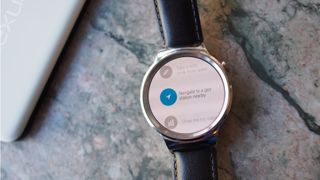
Waking an Android Wear watch from its dimly lit always-on state requires either flicking your wrist up, tapping on the touchscreen, or in some cases pressing in the power button.
All options considered, “Okay, Google” is the easiest way to ask the watch to search the web, pull up a song, display your daily steps, take your heart rate, make a new reminder, navigate to a place or set a timer or alarm. It even generally does as good job of sending texts and emails.
Android Wear apps, compatibility and phone-free use
If apps are what you’re after, Android Wear has plenty to choose from – and that list is constantly growing. Take a look on the Google Store, or if you’re short on time, check out our list of the best Android Wear apps.
Android Wear is compatible with phones running Android 4.3 or above. It even has limited iOS compatibility, for iOS 8.2 or above.
However, with Android Wear 2.0, operability on both Android and iOS should reach parity. Thanks to the native app feature, it doesn’t matter nearly as much now what OS your phone is using. So long as you can download the Android Wear app, you’re golden.

Android Wear watches
While Android Wear software is uniform across devices the hardware can vary quite a lot. Screens can be square or circular and smartwatch designs range from fitness-focused to smart and classy.
You can check out the latest and greatest devices in our list of the best Android Wear smartwatches, but highlights include the Moto 360 (2015), which is one of the most stylish smartwatches around, with a premium metal design, the Asus ZenWatch 2, which provides excellent value in a square form factor and the Sony SmartWatch 3, which, thanks to built-in GPS, is a sporty option.
Android Wear apps
Android Wear has grown a lot since its launch and while the number of apps can’t rival standard Android there are thousands available.
These cover numerous categories and include wrist-worn versions of many favorites, such as Spotify, Citymapper, Duolingo, Tinder, Uber and Evernote. You’ll also find many of the core Google apps, such as Play Music, Hangouts, Google Maps and Google Translate.

They’re typically stripped back versions of their smartphone counterparts, giving you easy access to core features and removing anything that wouldn’t work well on your wrist.
For example, the Spotify app lets you skip and pause tracks that are playing on another device, Google Maps brings turn by turn navigation to your wrist and Tinder offers all the same swipey fun as the smartphone version.

If you want more control you can also use the likes of IFTTT to create your own ‘recipes’ for controlling or automating connected devices like Nest and Amazon Echo.
And for the things you can’t do on your wrist there’s an “open on phone” option that’s nestled into nearly every app – except the ones that are native to Android Wear– which allows you to elegantly continue where you left off on your phone.
There’s a lot of app choice, but you won’t have to dig through them all to find the gems, as we’ve curated a constantly updated list of the best ones available, so you can always have the best software on your wrist.
As apps are usually quite limited they’re also a lot smaller than their smartphone versions, so despite being generally limited to 4GB of storage you’re unlikely to fill your watch up with them, though you might want to bear the limited storage in mind if you plan to store your music collection on your wrist.
Android Wear fitness
One of the key app categories on Android Wear is fitness, which is unsurprising since smartwatches have fitness bands and running watches to compete with.
If health and fitness is your main concern the actual hardware on most Android Wear devices isn’t a match for an expensive sports watch, or in some cases even for a cheap fitness band. But some put in a decent attempt, such as the Sony SmartWatch 3, which has built-in GPS, while many have heart rate sensors.
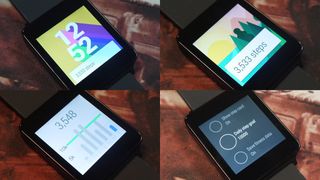
And the selection of apps and services for fitness freaks leaves less smart devices in the dust. There’s Google Fit obviously, which can act as a pedometer among other things and connect with other apps to store all your health and fitness data.
Speaking of other apps, you’ll also find the likes of Endomondo, Strava and Runtastic Pro available for your Android Wear smartwatch. These don’t offer the full range of features afforded by their smartphone counterparts, but they track your activities and in some cases can do so without even being connected to your phone.
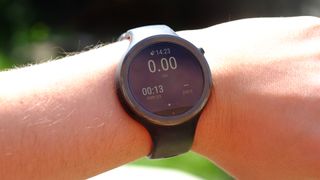
Android Wear 2.0 will give more focus to fitness, allowing apps to pass information to one another using the Google Fit framework. That means you can track the calories you consume with one app, then find out how many you’re burning with another, unrelated one.
There’s also automatic activity tracking, so in theory your watch will be able to tell whether you’re cycling or running, and instantly start up the right app.
[ad_2]
Source link
